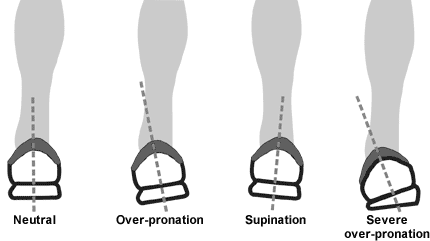Knowing Your Foot Type
You choice of shoes is a very important aspect of your workout. There are hundreds of shoes to pick from, so how do you make sure that the pair that you have your eye on is going to be a good fit for you? By adding careful consideration to your shoe choice to your list of tips to be a better runner, you will be better off with your fitness goals.
Figure out your size
Besides knowing your shoe size, there are a couple of other specifics that are good to know when it comes to your feet. First, you should know the width of your foot. Many shoes come in a regular and a wide fit, but you can also find some brands with shoes that are available in a narrow fit. Most shoe stores are able to measure your foot for width, so even if you are ordering online, you should go to your local shoe store and get measured for your size and width, just to make sure before you place an order that you have your measurements correct. If you can’t find a shoe in your correct width, you may want to consider taking a look at shoes made for the opposite gender. In general, women’s shoes are more narrow, and men’s are wider. So if you are a woman looking for a wide shoe, just take a look at some shoes in the men’s section, and learn what your size would be in men’s. Men can look for a more narrow shoe in the women’s section as well. As long as the shoe fits comfortably, it won’t matter if you are a cross-dresser when it comes to shoes!
Foot shape
Everyone has a differently shaped arch, and arch support is very important when you are looking for a pair of shoes that will be worn often. If you get your foot wet and make a foot print, you will be able to tell what your arch shape is. If there is a thin line (or no line) connecting your ball and heel, then you most likely have high arches. If the line is about half the width of the ball of your foot, then you are probably in the normal arch range. If the arch connects your heel and ball with a wide line that doesn’t have much of a curve, then you probably have flat arches.
Strike
Everyone strikes the ground in a different way when they run. Most runners step heel to toe, but some (especially barefoot and minimalist runners) hit the ground first with their arch/ball of the foot. You strike will also vary depending on the side of your foot that you land on. If your foot lands straight up and down, then your pronation is neutral. You will see the most wear on your shoes in the middle. If you overpronate, then you are landing more on the outer edge of your foot. You should be able to see signs of wear on the outer part of the soles on your shoes. Supination occurs if you tend to land on the inner part of your foot. the sole of your shoe under your arch will see the most wear if you supinate. The graphic below (from www.rei.com) gives a visual of the way that your foot rolls!
The way in which you pronate is often related to the level of your arch. Overpronators usually have flat feet, and supinators generally have high arches. When you look for a shoe, pick one that will support your arch type and encourage neutral pronation so that you can avoid injury.
Barefoot / Minimalist Running
Some runners choose to go totally barefoot. This provides a more “natural” way to run, but it can be dangerous since the skin of your feet can easily be punctured and damaged.
There are also minimalist, or zero drop shoes out there that encourage running as if you were barefoot. These can take some time getting used to, but they can help you to adjust your running so that you aren’t landing heel to toe (which can cause certain injuries), while keeping your foot protected from the elements.
After you have figured out your foot type, it is a great idea to go to a shoe store and try on a couple of pairs to see what is most comfortable for you and your stride. Even if you plan to buy shoes online, trying on a few pairs in the store can let you know a little bit better exactly what you should be looking for.

